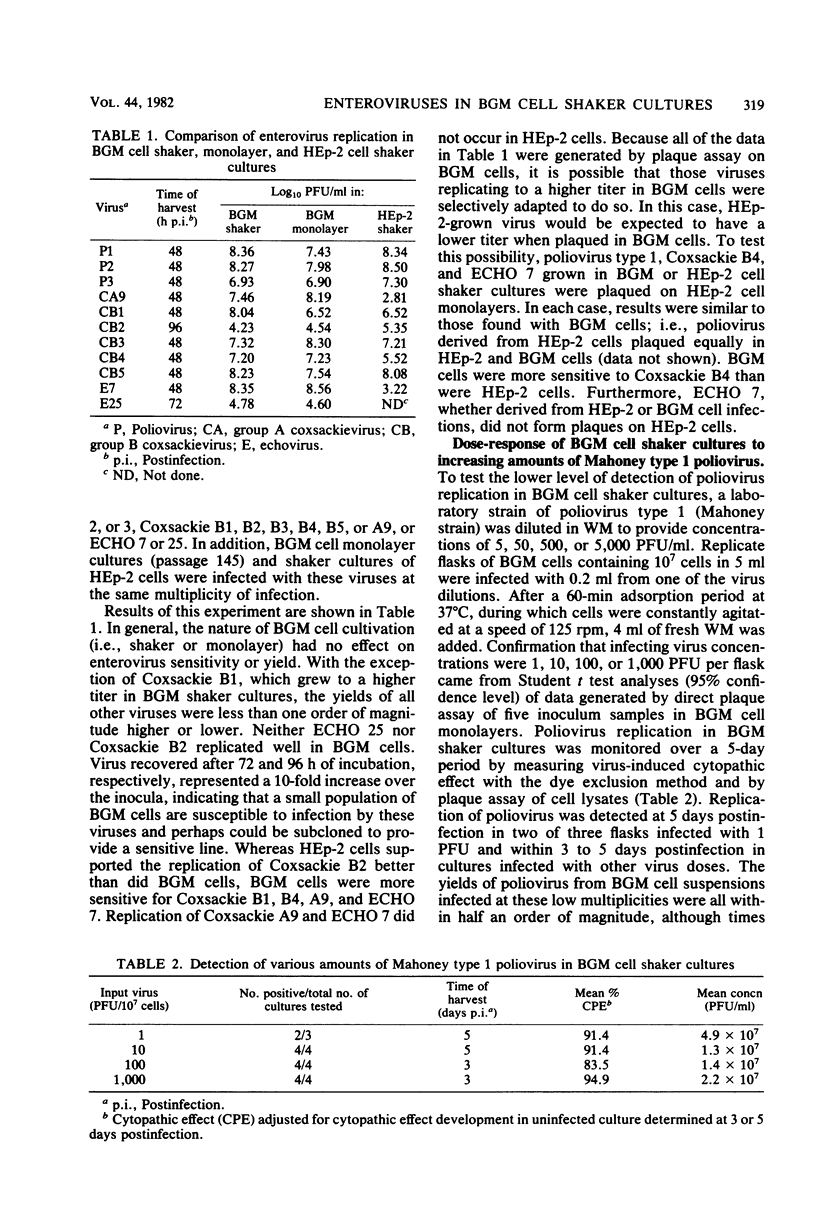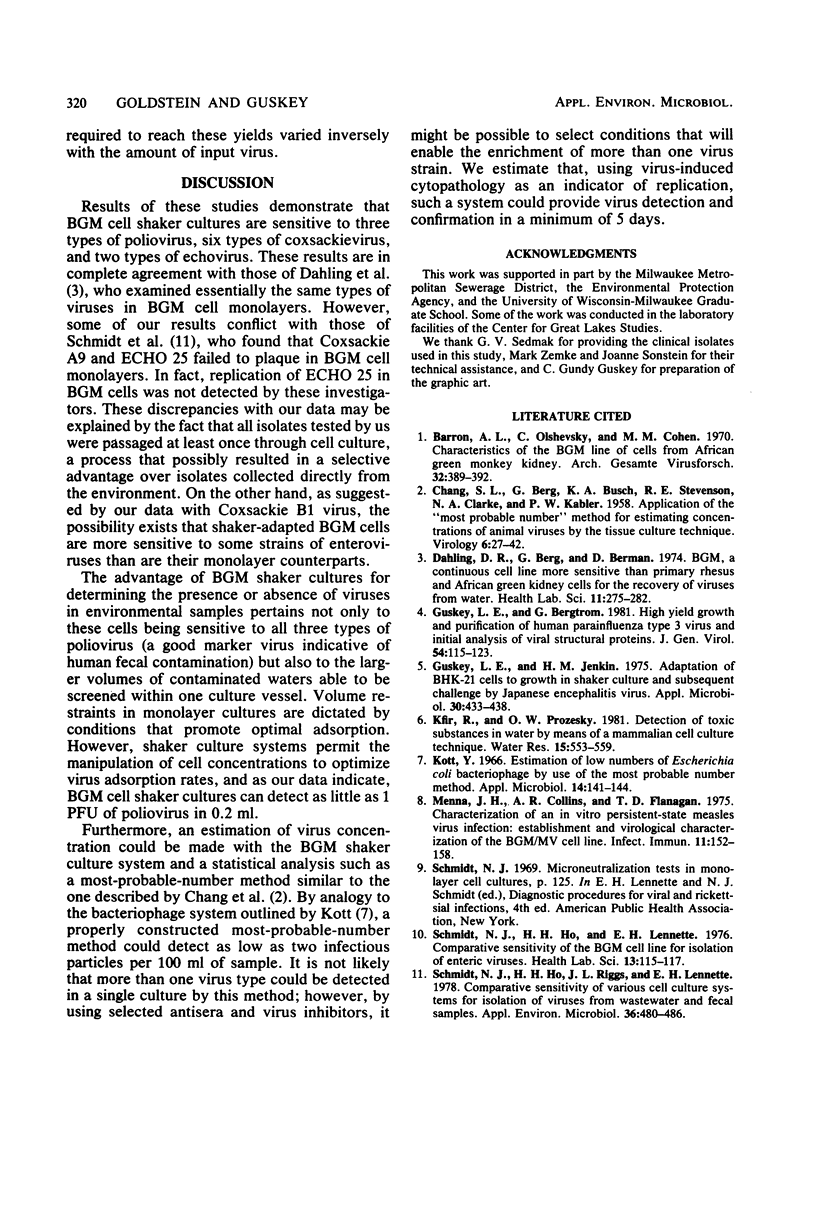Abstract
Buffalo green monkey kidney cells were adapted to grow as shaker cultures. Replication of environmental and clinical isolates of poliovirus, coxsackievirus, and echovirus in these cultures was analyzed by plaque assay and compared with replication in Buffalo green monkey kidney cell monolayers and HEp-2 cell shaker cultures. Dose-response tests with various concentrations of Mahoney type 1 poliovirus indicated that Buffalo green monkey kidney cell shaker cultures could detect as little as 1 PFU in an inoculum of 0.2 ml. These data suggest that Buffalo green monkey kidney cell shaker cultures can be effectively used for the detection of small quantities of enteroviruses from environmental sources.
Full text
PDF



Selected References
These references are in PubMed. This may not be the complete list of references from this article.
- Barron A. L., Olshevsky C., Cohen M. M. Characteristics of the BGM line of cells from African green monkey kidney. Brief report. Arch Gesamte Virusforsch. 1970;32(4):389–392. doi: 10.1007/BF01250067. [DOI] [PubMed] [Google Scholar]
- CHANG S. L., BERG G., BUSCH K. A., STEVENSON R. E., CLARKE N. A., KABLER P. W. Application of the most probable number method for estimating concentrations of animal viruses by the tissue culture technique. Virology. 1958 Aug;6(1):27–42. doi: 10.1016/0042-6822(58)90057-6. [DOI] [PubMed] [Google Scholar]
- Dahling D. R., Berg G., Berman D. BGM, a continuous cell line more sensitive than primary rhesus and African green kidney cells for the recovery of viruses from water. Health Lab Sci. 1974 Oct;11(4):275–282. [PubMed] [Google Scholar]
- Guskey L. E., Bergtrom G. High yield growth and purification of human parainfluenza type 3 virus and initial analysis of viral structural proteins. J Gen Virol. 1981 May;54(Pt 1):115–123. doi: 10.1099/0022-1317-54-1-115. [DOI] [PubMed] [Google Scholar]
- Guskey L. E., Jenkin H. M. Adaptation of BHK-21 cells to growth in shaker culture and subsequent challenge by Japanese encephalitis virus. Appl Microbiol. 1975 Sep;30(3):433–438. doi: 10.1128/am.30.3.433-438.1975. [DOI] [PMC free article] [PubMed] [Google Scholar]
- Kott Y. Estimation of low numbers of Escherichia coli bacteriophage by use of the most probable number method. Appl Microbiol. 1966 Mar;14(2):141–144. doi: 10.1128/am.14.2.141-144.1966. [DOI] [PMC free article] [PubMed] [Google Scholar]
- Menna J. H., Collins A. R., Flanagan T. D. Characterization of an in vitro persistent-state measles virus infection: establishment and virological characterization of the BGM/MV cell line. Infect Immun. 1975 Jan;11(1):152–158. doi: 10.1128/iai.11.1.152-158.1975. [DOI] [PMC free article] [PubMed] [Google Scholar]
- Schmidt N. J., Ho H. H., Lennette E. H. Comparative sensitivity of the BGM cell line for isolation of enteric viruses. Health Lab Sci. 1976 Apr;13(2):115–117. [PubMed] [Google Scholar]
- Schmidt N. J., Ho H. H., Riggs J. L., Lennette E. H. Comparative sensitivity of various cell culture systems for isolation of viruses from wastewater and fecal samples. Appl Environ Microbiol. 1978 Sep;36(3):480–486. doi: 10.1128/aem.36.3.480-486.1978. [DOI] [PMC free article] [PubMed] [Google Scholar]


